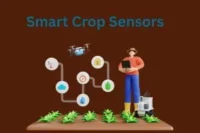Complete Guide to Nutrient Application for Maximum Crop Yield
Published: 24 May 2025
You’ve followed every rule in the book—tilled the soil, watered consistently, used fertilizer… yet your crops still don’t look right. The leaves are yellowing, the growth is patchy, and your yields aren’t improving. You start wondering: Am I missing something? Maybe it’s the soil. Maybe it’s the fertilizer. Or maybe it’s something no one really talks about in plain language: nutrient application. Not just dumping fertilizer, but actually understanding what your plants need, when they need it, and how to give it to them. Sound confusing? You’re not alone. But this is exactly where everything starts to change.
So, guys, without wasting time, let’s jump into the article to learn the Complete Guide to Nutrient Application for Maximum Crop Yield
What Is Nutrient Application?
- Clear definition in simple terms
- Emphasize: “You can’t grow strong crops in weak soil.”
- Link plant nutrition directly to yield and profitability
- Example: “A corn crop low in nitrogen won’t just grow slower—it may produce 30% fewer kernels.”

Types of Nutrients Plants Need for High Yield
- Macronutrients (NPK)
- Nitrogen: Leaf & stem growth
- Phosphorus: Root development, early growth, flowering
- Potassium: Disease resistance, fruit/seed quality
- Secondary Nutrients: Calcium, Magnesium, Sulfur
- Micronutrients: Iron, Zinc, Boron, Copper, etc.
- Small doses, huge impact
Proven Methods of Nutrient Application
- Soil Application
- Broadcast, banding, side-dressing
- Ideal for long-term crops
- Foliar Feeding
- Emergency rescue for deficiencies
- Fast absorption
- Fertigation (Irrigation + Nutrients)
- Efficiency, control, ideal for modern farming
- Hydroponics & Controlled Systems
- Precision feeding, maximum output
When to Apply Nutrients for Best Yield
- Nutrient needs by crop stage (germination, vegetative, flowering, fruiting)
- Seasonal application calendar
- Pre-planting, mid-season, late-season strategies
- Role of soil testing to avoid guesswork
“The right nutrient at the wrong time is as bad as no nutrient at all.”
5 Common Mistakes That Kill Yield
- Over-fertilization = burned roots, stunted growth
- Wrong ratio for crop type
- Skipping pH & soil testing
- Relying only on synthetic inputs
- Applying before rain (nutrient wash-off)
“It’s not failure—it’s feedback. And now you’ll know better.”
Soil Testing:
Before you apply a single drop of fertilizer, there’s one crucial step most people skip — and it could be the reason your plants are underperforming.

- Why testing saves money and increases yield
- How to collect a proper sample
- Interpreting a basic soil test report
- Tools or services (link or mention kits)
Before and After Proper Nutrient Us
- Farmer profile: “A wheat farmer in Punjab increased yield by 40% after applying a balanced NPK blend based on soil tests.”
- Visuals or testimonials
- Data if available: “From 20 to 28 quintals/acre in one season.”
Pro Tips From Agronomists and Growers
- Always water after applying dry fertilizer
- Avoid foliar sprays in full sun
- Mix compost with synthetic for balanced uptake
- Rotate nutrient types seasonally to avoid build-up
Technical Checklist
| SEO Element | Implementation Tip |
|---|---|
| Meta Title | Nutrient Application Guide for High Yield – Best Practices 2025 |
| Meta Description | Boost your crop yields with this complete nutrient application guide. Methods, timing, and tips that work. |
| Image Alt Text | how to apply nutrients, nutrient deficiency in plants, fertilizer schedule chart |
| Internal Links | Link to: soil testing guide, composting tips, watering methods |
| External Links | Trusted: FAO, university ag extensions, peer-reviewed studies |
| URL Slug | /nutrient-application-guide-crop-yield/ |
FAQs about Complete Guide to Nutrient Application
Here are some of the most frequently asked questions about the Complete Guide to Nutrient Application for Maximum Crop Yield
➤ Apply nutrients based on crop stage and soil condition—typically every 3–6 weeks or as recommended by a soil test.
➤ Vegetables thrive on balanced NPK (e.g., 10-10-10), while grains often need higher nitrogen blends like 20-10-10.
➤ Yes—too much fertilizer can burn roots, weaken plants, and reduce both quality and yield.
- ➤ A simple soil test will reveal nutrient levels, pH, and deficiencies so you can fertilize with precision.
4o

- Be Respectful
- Stay Relevant
- Stay Positive
- True Feedback
- Encourage Discussion
- Avoid Spamming
- No Fake News
- Don't Copy-Paste
- No Personal Attacks

- Be Respectful
- Stay Relevant
- Stay Positive
- True Feedback
- Encourage Discussion
- Avoid Spamming
- No Fake News
- Don't Copy-Paste
- No Personal Attacks





